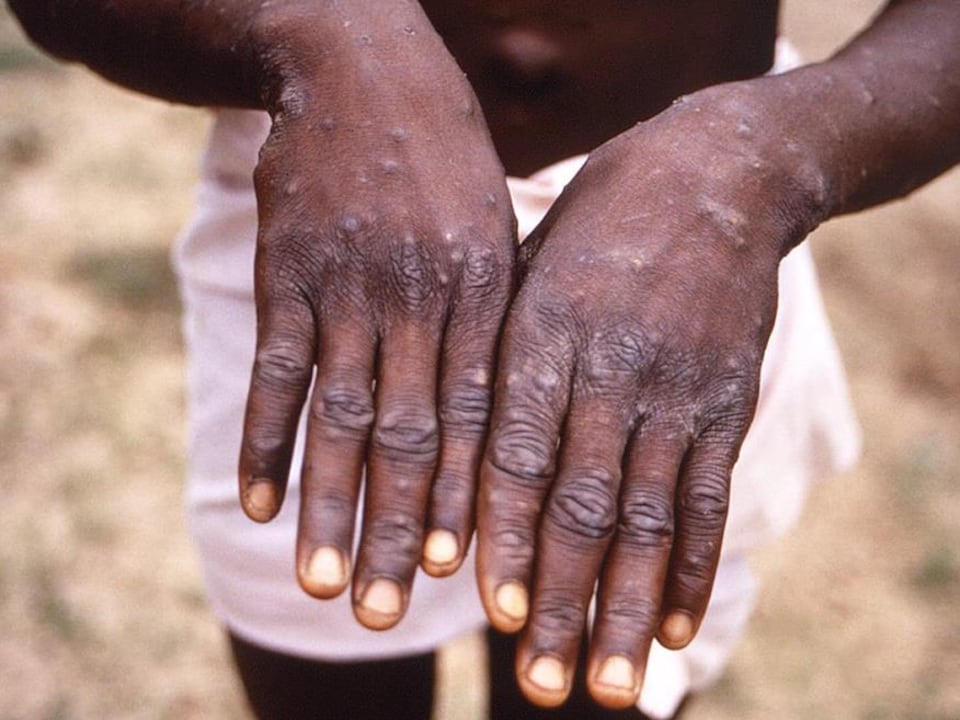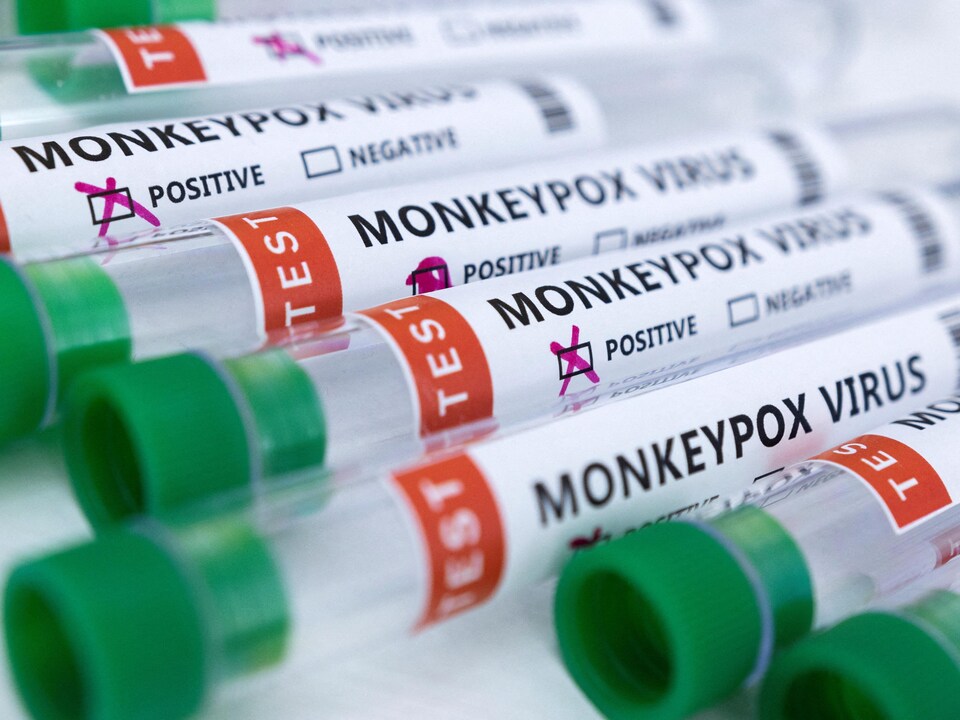The number of monkeypox cases is rising every day. If the World Health Organization (WHO) does not believe that this disease will become pandemic, the escalation of cases will be closely monitored by health authorities. To better understand, here are the answers to six frequently heard questions.
1. What is monkeypox?
Also called monkeypox (simian orthopoxvirus), this disease was first identified in the 1950s, when two outbreaks occurred in colonies of monkeys used for research purposes. The first human case was reported in 1970 in the Democratic Republic of Congo (DRC).
Monkeypox is endemic to West Africa and is usually rare elsewhere in the world.
This disease, also called smallpox, is often considered a mild form of smallpox. It will be recalled that the World Health Organization (WHO) declared smallpox eradicated from the world in 1980.
2. What are the symptoms?
Reported symptoms consist of skin lesions in the mouth and genitals similar to those caused by chickenpox. These symptoms may be preceded or accompanied by fever, night sweats, headache, swollen glands, and joint or muscle pain.
The incubation period varies from 5 to 21 days. An infected person can become infected five days before the first symptoms and continue to be so throughout the time when they have skin lesions.
Most patients are not hospitalized and often symptoms resolve without treatment.
However, very rare cases of serious complications can occur. For chronic infections, there are several experimental antiviral treatments, such as tecovirimat, cidofovir, or brincidofovir.
The mortality rate for the (West African) strain of the disease is 1%. Mortality is somewhat higher in children and in immunocompromised people.
3. How many cases are there?
The first case of monkeypox outside Africa was seen in the UK on May 6, according toWHO. The infected person returned from a trip to Nigeria.
On 23 May, about 200 cases were recorded outside Africa; on May 30, more than 250 cases.
According to the tally of researchers from the Global.health group (New window), on June 2, 2022, there were approximately 775 confirmed cases in nearly 30 countries and approximately one hundred suspected cases. No deaths were reported.
The countries with the most confirmed cases are: England (199), Spain (156) and Portugal (138).
Canada has about sixty cases, most in Quebec. In the province, the number of confirmed cases has risen from 25 to more than double in less than a week.
Right now, we are talking about a possible case when a person has symptoms of the virus and contacted a confirmed or probable case or traveled to an area where a confirmed case was detected. . People without an epidemiological link but showing signs and symptoms associated with the disease were classified as suspected cases.
In Africa, 7 out of 54 countries in Africa report having the disease and there are about three times more cases of monkeypox than usual. According to the Africa Centers for Disease Control and Prevention, there are more than 1,400 suspected cases and 63 deaths in Cameroon, Central African Republic, Congo and Nigeria. Less than 50 cases have been confirmed, as testing capacities are limited in these countries.
Genetic sequencing has not shown a direct link to the outbreak outside Africa, according to health officials. The current outbreak therefore suggests that the virus has spread around the world undetected for some time.
4. How does the virus spread?
The disease is usually transmitted from infected animals to humans, but it can also spread to humans. It can be passed during close physical contact with an infected person, on their clothes or their blankets.
However, some questions remain unanswered. For example, it is not known whether those infected but without symptoms can spread the disease or whether the disease can be transmitted through the air, as in the case of measles or COVID-19. Airborne transmission is believed to be less common, but not impossible.
Some of the cases involved men who had sex with other men, but theWHO I want to remind you that monkeypox is not considered a sexually transmitted disease. The disease is believed to be transmitted through close contact and not through sexual activity itself.
5. Can monkeypox be prevented?
The smallpox vaccine is also 85% effective against monkeypox and the immunity awarded by vaccination appears to last more than 25 years.
However, regular vaccination programs ended in Canada and around the world in the early 1970s.
At this time, large -scale vaccination campaigns are not recommended. Several countries, including Canada and the United Kingdom, vaccinate certain high-risk people, including those in close contact with people suspected of being infected.
6. Why are there so many cases today?
This is the first time thatWHO observing as many cases in as many countries at once, elsewhere than in Africa.
In 2003, an epidemic of monkeypox struck the United States. There were 70 cases identified; nothing ended in death.
However, many scientists are not surprised to see an explosion of cases around the world.
The number of monkeypox cases in Africa has been rising over the past few years (New window).
From 2005 to 2007, there were less than 800 cases in the DRC. More than 2800 suspected cases were reported in 2018, then 3800 in 2019.
In 2020, nearly 6,300 cases were recorded, including 229 deaths. Cases are also on the rise in neighboring Sudan and the Republic of Congo. In Nigeria, more than 500 cases have been recorded since 2017.
Researchers also warned in 2010 (New window) that, since a large portion of the population has not yet received the smallpox vaccine, the simian strain may have spread beyond the Democratic Republic of the Congo.
Moreover, the majority of cases in the Republic of Congo in recent years have been adolescents who have not been vaccinated against smallpox.
In addition, according to both of these researchers, animal migrations caused by climate change and deforestation fuel interactions between humans and animals, facilitating the spread of viruses such as monkeypox in people.
The high number of cases in Africa, combined with more travel since the removal of restrictions associated with the COVID-19 pandemic, could create ideal conditions for its rapid spread.
According to'WHO, there is no concrete evidence yet that the virus has mutated. It should be noted that these orthopoxviroses are relatively stable.
Source: Radio-Canada


